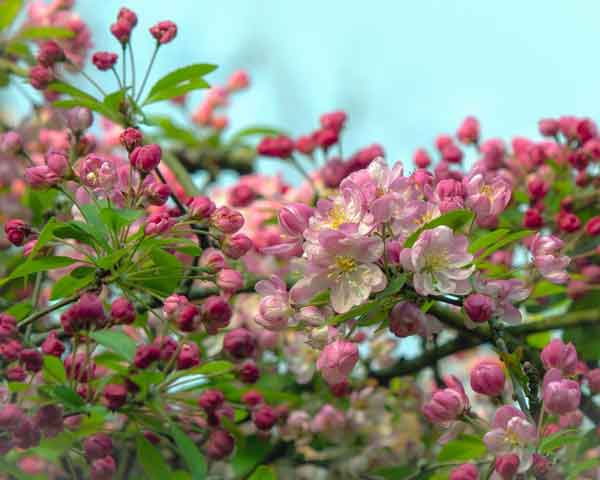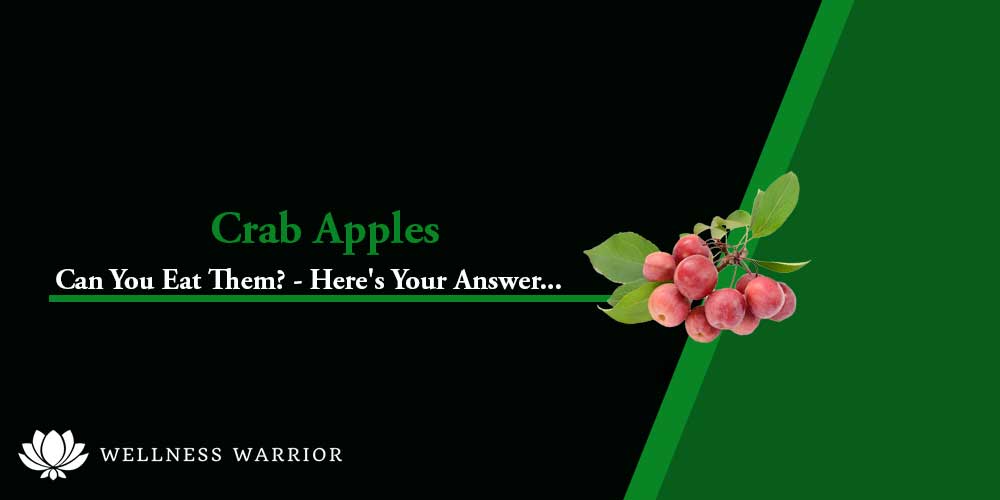From the day we are old enough to understand what is good for us, we are told the importance of fruits and vegetables.
They need to eat healthy every day and to include at least five pieces of fruit and vegetables in their daily diet.
One of the most easily available fruits that are on everyone’s list is the apple.
This delicious red fruit comes in a variety of different forms, from granny smith apples to crab apples.
Each type of apple has its own distinct flavor, size, color, and area of growth, such as orchids.
Our focus today will be on the humble crab apple, on questions like are crab apples edible, where to find crab apples, and much more.
Are Crabapples Edible? Exploring The Fruit

What Are Crab Apples?
Crab apples are wild apples, and they are part of the Malus genus, which is part of the Rosacea family.
When compared to a standard apple, crab apples are miniature apples.
These tiny apples grow on a crab apple tree and often raise the question of whether or not they can be eaten.
The difference between domestic apples compared to the little fruits of a crab tree are the size and sweetness, and crab apples taste sour while traditional apples are sweet.
Domestic apples are grown for the purpose of creating sweeter fruit.
The beauty of this genus, Malus sylvestris (crab apples), is the ability to grow crab apple trees anywhere; the tiny fruits from this tree add a pop of color to an urban landscape.
The resilience of crab apple trees can be seen in their ability to produce plentiful blossoms of pink and white flowers, which go on to produce bountiful crabapple fruit without any maintenance or the perfect environment.
Crab apples are small fruit that looks more like cherries than apples.
This colorful fruit comes in many colors, from the standard apple red to yellows and greens.
A crab apple is best identified by its size; anything larger than 5cm in diameter ( 2cm) does not classify as a crab apple.
Another great way to tell the difference between crab apples and other apples is the absence of a pit. A crab apple while having crab apple seeds as well as a core but will lack a pit.
Crabapple Varieties
The crab apple, like other fruit, comes in a wide variety.
There are fruiting apple trees and non-fruiting apple trees.
For the most part, a crab apple tree that flowers will produce little apples, but there is a small percentage that does not.
Fruiting Apple varieties include the likes of Donald Wyman, golden hornet, sparkling sprite, snowdrift, sugar thyme, and many, many more.
Each apple variety has its own identifying factor and differing taste.
Can You Eat Crab Apples?
Many people look at crab apples and think that they are toxic and therefore inedible.
This can’t be further from the truth; you can most definitely eat crab apples.
While it is true that the seeds of this apple contain a substance known as a cyanogenic glycoside, which itself is not toxic, however, when it metabolizes in the body, it becomes cyanide, a toxic compound.
This is not a matter of concern, however, as the amount in the seeds is negligible, and even if you accidentally eat a few seeds, you will come to no harm.
It would require a large number of seeds to cause any sort of harmful effect on your body.
So the answer to the question of whether you can eat crab apples or not is a resounding yes.
However, it’s not wise to eat them in the same manner as traditional apples.
This is because they are not as sweet as the apples you are used to; they also have a texture that is spongy as opposed to the crisp nature of other apples.
Of course, that does not mean that you can’t eat them; you simply need to get creative.
There are numerous recipes available to make eating apples easy, from crab apple jelly to ciders, salads, and baked goods, all with delicious flavor.
Making jelly from crabapples is a great idea as the recipe requires sugar to make the sour crabapple sweet, the combination of which provides excellent flavor.
Additionally, the pectin in crabapples makes this a great fruit of choice for jelly-making.
Crabapple can be used in apple cider.
This gives the drink a more interesting flavor compared to the traditional apple cider.
It adds a sour, spicy flavor to the apple cider.
Other Ways To Use CrabApples
While there are many ways to incorporate crabapples into various recipes, the use of crabapples is not limited to foods and drinks.
The fruit and the tree of a crabapple can be used in various aspects of life.
Crabapple trees produce good wood, which can be used in cooking fires, as it burns hot but not too fast and without creating too much flame.
It also provides a pleasant scent to food cooked on this fire, which also gives the food a smoky taste.
It is best to cut this wood when it is wet because it is exceedingly difficult to chop the wood when it has become dry.
Crabapples are used as compact ornamental trees, making for great decoration pieces; they are also capable of providing blossom between the spring and autumn time.
At the same time, the fruit itself can be used in wreaths or vases with branches or without.
Crabapples are incredibly beneficial in orchard planting.
They are used as orchard pollenizers as bees are attracted to them more than other apple trees.
In a pinch, you can use a bucket or drum bouquet of crabapple flowering branches to boost the pollination and growth of your tress.
These trees bloom when planted between every sixth or seventh tree in an orchid.
Crabapple can be used as a graft to provide additional cold hardiness to trees that are being grown in cold northern areas.
They can also be used as rootstock to add beneficial characteristics to other plants.
Growing Crab Apples
Growing these tiny joyful fruits is not as hard as one may think.
These trees are incredibly resilient and require very little maintenance to thrive.
There is a reason you can easily find these trees in an urban landscape or growing in the yard of a home that has long been abandoned.
This means that if you want to intentionally grow one of these trees, it will be an easy process.
All you need to do is plant the seeds from a crabapple into the soil outside and let it grow.
As the tree grows, it is a good idea to trim the branches and groom the tree to give a better appearance and allow for more structured growth.
The flowers begin to appear in the springs months.
Which slowly gives rise to the apples during the autumn season.
This is the time to pick your apples.
The great thing about these apples is that not only can you pick the fruit you grew but also any wild fruit that you find on other crabapple trees in your area.
Harvesting Your Crabapples
Harvesting these apples is a quick and easy process. You do not need to go to an orchard simply for this purpose.
If you have this tree in your backyard, pick the fruit and enjoy it. If not, you can find many of these trees growing around your area.
You will need a decent amount of these apples to make any recipe because of how small they are.
Picking and harvesting these apples can be a lot of fun. You can spend many fun-filled hours with your friends finding and picking crabapples, the underdog of the apple world.
How To Tell If Your Crabapple Is Ripe?
There is nothing worse than picking fruit and it being unripe or overripe. It completely ruins the enjoyment and, of course, your taste.
This is why it is a good idea to ensure that you are picking fruit that is ripe beforehand. So you can easily enjoy the fruit you have picked.
There are two ways you can do this.
One is dependent on the color of the seeds present in the apple.
If the seeds are brown, then that is a good indication that the crab apple can be eaten, while green or white seeds mean they are unripe.
The other method at your disposal is the taste and feel of the crab apple.
While these apples are sour, they should not taste arcid; if they do, the apple is not edible and should be discarded.
Similarly, crabapples that are overly mushy should not be eaten.
Conclusion
If you were nervous about crabapples and whether or not you can eat them, you can now rest assured that they can 100% be consumed.
In fact, there are numerous recipes that you can use them in, from butter to salads and ciders.
Furthermore, they can easily be found in the wild or in urban landscapes and are easy to grow if you want to have your own tree.
